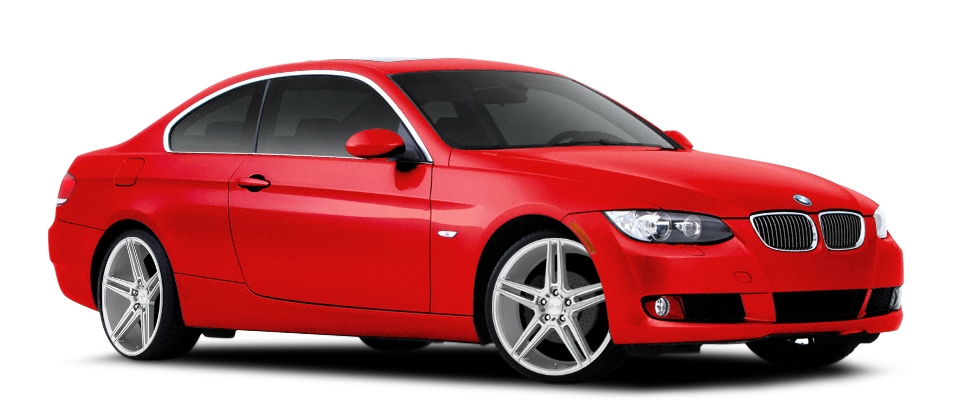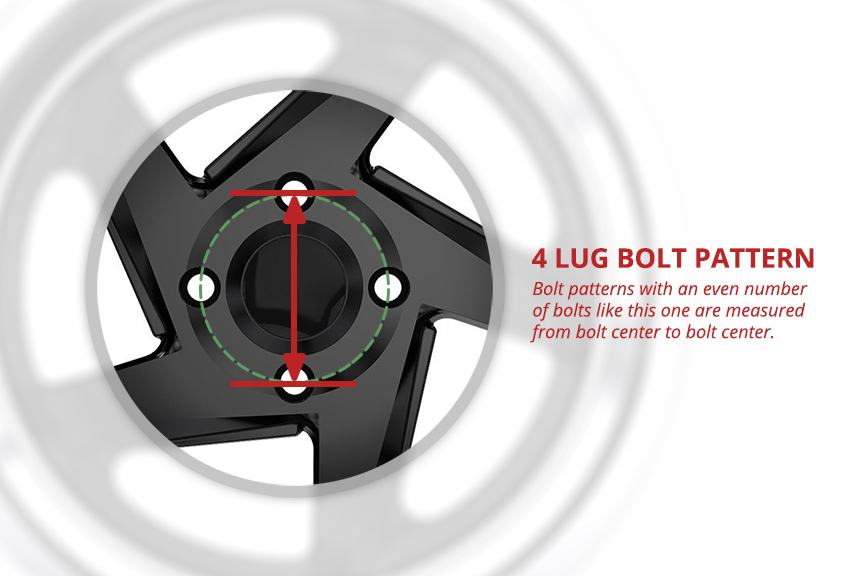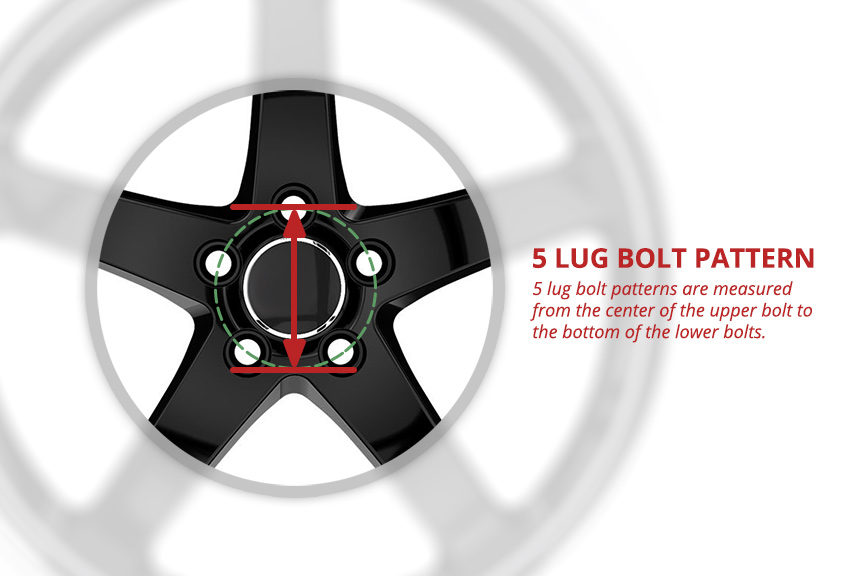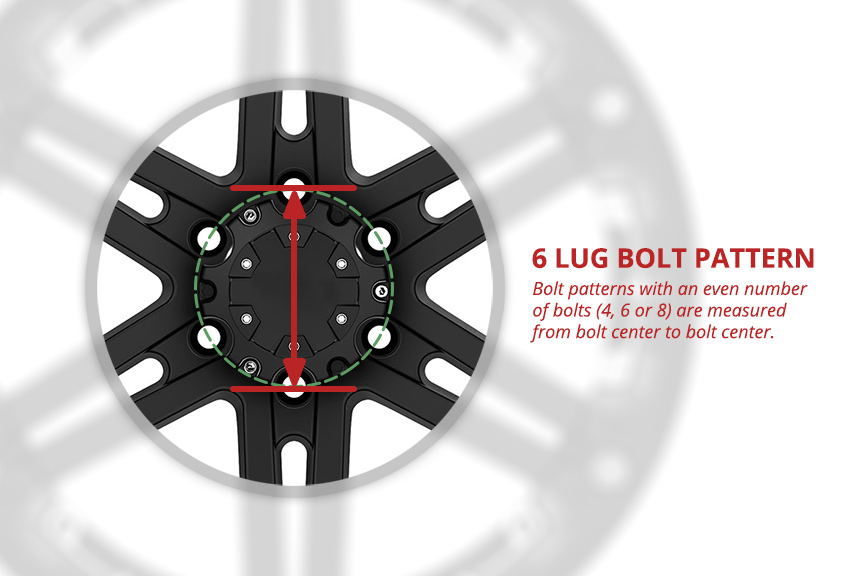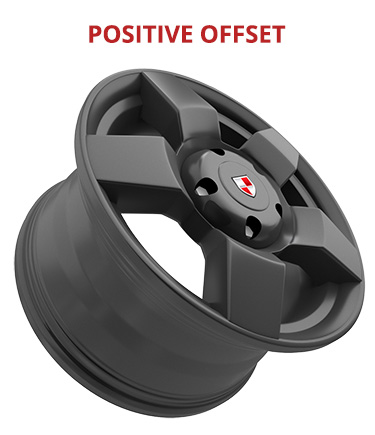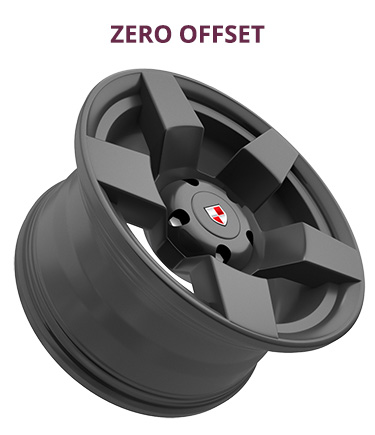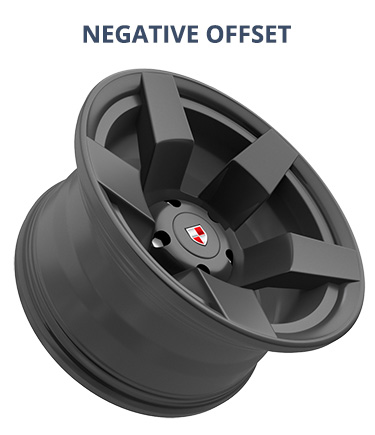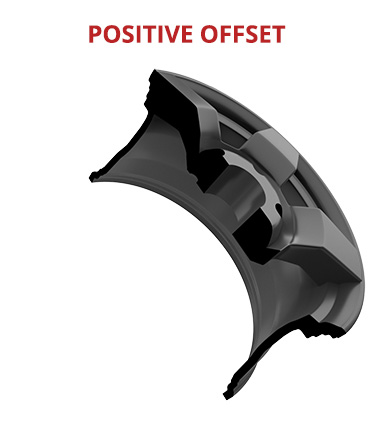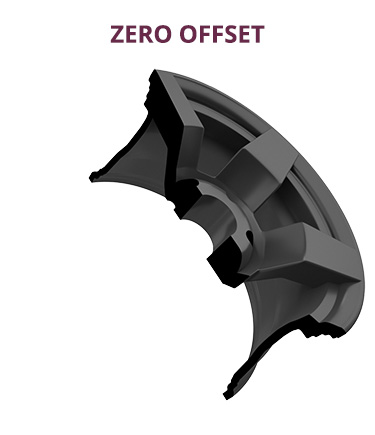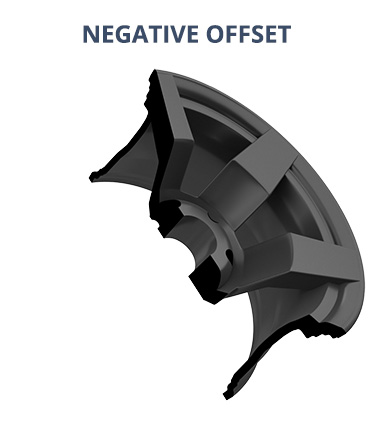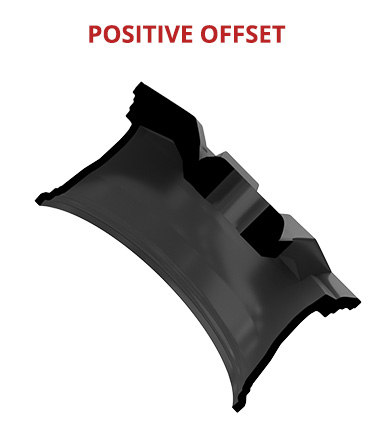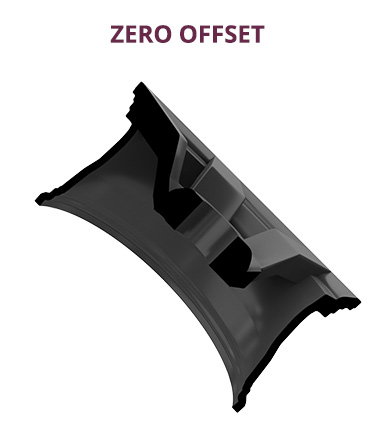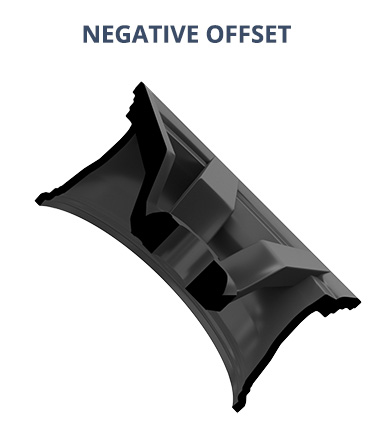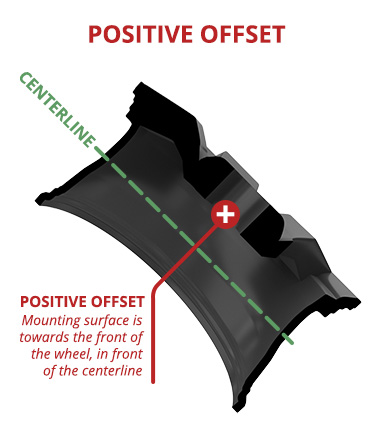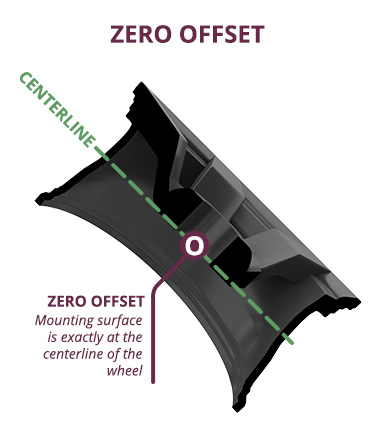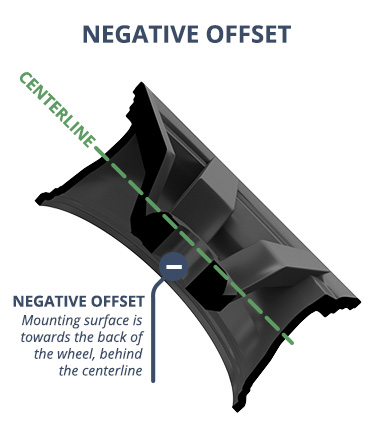A wheel is the entire piece. It is made up of a hub, spokes, and a rim. The rim is the outer-most portion of the wheel.
Wheels are an integral part of your ride’s look and performance. Nothing enhances the look of a vehicle like a new set of aftermarket wheels and tires. But, wheels come in a dizzying array of sizes, styles, and materials. There are so many types of wheels and the terminology for wheel parts can be confusing. Exactly what is the difference between a wheel and a rim? What do the numbers about a wheel mean?
Arm yourself with information before you shop for wheels. This guide will help you dive deep into the names of wheel parts, dissect wheel anatomy, learn how wheels are made, why wheel size matters, how to measure wheel offset, the ins and outs of upsizing wheels and much more. There’s even a glossary of terms for quick reference.

Parts of a Wheel
A wheel might look like a single object, but it is made up of several parts. To understand a wheel, you must understand the parts of a wheel. Let’s get acquainted with the most important wheel parts by starting at the center of the wheel.
The center bore is the opening that allows the wheel to fit on the axle. This is the part of the wheel that actually attaches the wheel to the vehicle and bears the weight of the vehicle. When you buy aftermarket wheels, you must ensure that the center bore is at least the size of the OEM wheel. This generally isn’t a problem as most manufacturers make wheels with a large center bore in order to fit as many vehicles as possible. When the center bore is larger, hubcentric rings are used to fill the gap. Center caps will cover the center bore with style.
Going out from the center bore is the center disc. This is the portion of the wheel into which the bolt holes are machined to create the bolt circle. This area is the point of contact to the axle seat, the lug bolts and the lateral surface of the rotor. Everything on the wheel connects in some manner to the disc.
The lug holes create the bolt circle with 4 or more openings. The diameter of the bolt circle is called the bolt circle diameter and abbreviated as BCD. The amount of holes and the diameter of the bolt circle is what defines the bolt pattern. Now that we’ve got the center covered, let’s move outward in our wheel anatomy.
The spokes connect the center disc to the outer ring of the wheel. The spokes give the wheel structural integrity and are one of the major elements of style in wheel design.
The outer lip is the portion of the wheel in front of the spokes. For the most part, the dish only comes into play when it is a large area. When the spokes are significantly distanced from the outer edge, the wheel is considered a deep dish wheel. This is done purely for aesthetic reasons. As the dish gets deeper, the face is more vulnerable to damage from impact.
Now, on the very outer portion of the wheel is the barrel. The barrel is what creates the structures necessary for mounting the tire. The barrel has many parts. The smallest inside diameter of the barrel is the drop center. If the drop center is close to the front face of the wheel, it is a front mount wheel. If the drop enter is close to the back face of the wheel it is a reverse mount wheel. The barrel edges are flared to create the flanges. The flanges keep the tire from slipping off. The outer facing flanges are part of the cosmetic face of the wheel.
Just inside the flanges are flat areas called the beads. This is where the edges of the tire sit onto the wheel. Mounting humps circle the barrel on both the car side and the cosmetic side of the wheel. These ridges separate the beads to keep the tire from slipping away from the edge of the wheel.
Now you know the parts of the wheel, let’s look at how the pieces are put together.
How Wheels are Made
Different types of wheels are formed by different types of manufacturing methods. The wheel structure and the wheel material determine the manufacturing process used. Here are the most common methods used to make aluminum and alloy wheels.

Casting
This is the simplest method of manufacturing a wheel. Molten metal is poured into a mold to create the wheel. With gravity casting, the pressure of gravity pushes the metal into the mold. Pressure casting uses additional pressure to compress the metal into the mold. Low pressure casting uses air to force the molten metal into the mold and compress the metal. Counterpressure casting uses the suction force of a vacuum to pull the molten metal into the mold. Casting is used to create a one-piece wheel structure.

Flow Forming
This combines a casting process with a stretching process. First the metal is poured into a mold and then heat and high pressure rollers are used to shape, stretch and form the wheel. This process creates a thin but dense metal. That means light, but strong.

Forging
This process is popular with aluminum and some aluminum alloys. An aluminum billet (a block of metal) is the starting point. The billet is then crushed into shape using an unbelievable amount of pressure. This creates a wheel structure that is dense, strong, and light.

Rotary Forging
This process was pioneered by TSW Wheels and is being used by Motegi Racing Wheels as well. It is similar to standard aluminum forging but with a twist. While the billet is being forged, the forge is spinning at high speeds. This forces the molecules to form strong chains. This structure results in a wheel that is stronger than a conventionally forged aluminum wheel.
Wheel Sizes
Wheels come in a wide range of sizes. The low-end is anchored by 15 inch wheels; massive 26 inch wheels dominate the upper end and wheels of all sizes are available in-between. So, if your car or truck comes stock with 16 inch wheels why would you want another size? Two reasons: aesthetic appeal and performance.
Larger wheels just look better. They fill out the wheel well and that provides visual impact. It’s what we call pure wheel eye candy. Larger wheels carry tires with smaller sidewalls so you get better grip and performance. For off road vehicles, this translates to less roll and sway and more stability. The only downsides to upsizing are that larger wheels and tires weigh more so gas mileage suffers and acceleration from 0 to 60 is degraded. Car and Driver studies also determined that at the upper limits, the suspension is taxed and the ride can suffer.
Don’t forget, your vehicle was originally engineered to roll on stock size wheels. That means the speedometer, odometer, traction control, torque and gearing settings were based on the distance that the stock wheel and tire assembly would cover in one revolution. When you change the size of the wheel you must maintain the overall diameter of the wheel and tire assembly. So, as your wheels get larger, the standing size of the tire gets smaller.
A good rule of thumb is that for every increased inch of wheel diameter you must decrease an inch of standing height. This maintains the overall diameter. That means the wheel and tire will still cover the same amount of distance in one rotation but it will look so much better doing so.
A wheel size is expressed as follows:
DxW
Where D = diameter and W = width.
For example: 18x9 means the diameter of the wheel is 18 inches and the width is 9 inches.
Not sure upsizing really makes a difference? Seeing is believing.
Select different wheel sizes below to see how each one looks on the same car:

Notice how the look of the vehicle changes as the wheel well is filled. The 17 inch wheels look good, the 18 inch wheels look great, and the 19 inch wheels are flat out crazy.
Here you can browse some popular wheel size combinations:
Bolt Patterns
The bolt pattern is made up of the number of bolts and the diameter of the imaginary circle they create (BCD). The BCD can be expressed in inches or millimeters. Bolt patterns with an even number of bolts are measured from bolt center to bolt center. 5 lug bolt patterns are measured from the center of the upper bolt to the bottom of the lower bolts.
A bolt pattern is expressed as follows:
NxBCD
Where N = number of bolts and BCD = bolt center diameter.
For example, if you have a 5 lug wheel and your bolt center measures 114.3 millimeters then your bolt pattern is 5x114.3.
Navigate the slideshow below to see examples of bolt patterns:
Here are examples of common bolt patterns. Each link lets you browse existing wheels with that bolt pattern:
Wheel Offset
The offset may be one of the most difficult parts of the wheel to understand. Offset measures the distance from the centerline of the wheel to the mounting surface. It is measured in millimeters. It can be a zero, positive, or negative offset.
Navigate the slideshow below to visualize different wheel offsets:
With a 0 (zero) offset, the mounting surface is exactly in the center of the wheel. With a positive offset, the mounting surface is to the front of the wheel. It is expressed as the number of millimeters from the centerline. With a negative offset, the mounting surface is to the back side of the wheel. It is expressed as the number of millimeters from the centerline. For example, if a wheel is 9 inches wide, the centerline is at 4.5 inches. A positive offset is the number of millimeters beyond 4.5 inches and a negative offset would be the number of millimeters in the opposite direction.
A positive offset makes the wheels look like they are coming further out from the wheel well and a negative offset makes the wheels look like they are deeper in the wheel well.
What Wheel Numbers Mean
Now that we have looked at the different parts of wheels and how they are measured, we are ready to start reading the wheel numbers.
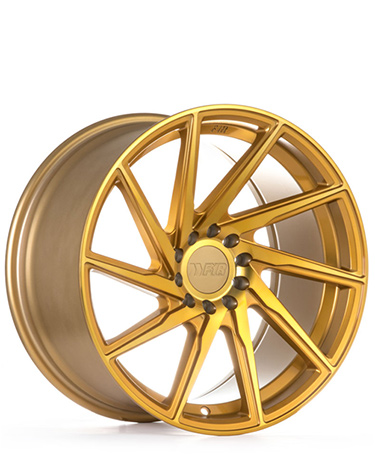
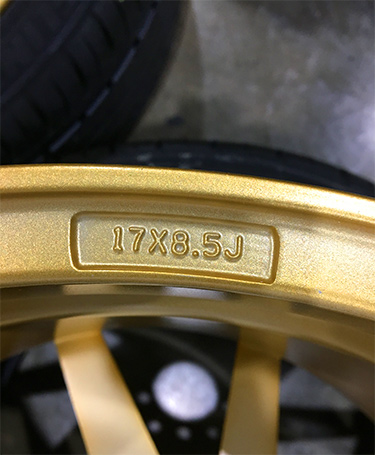
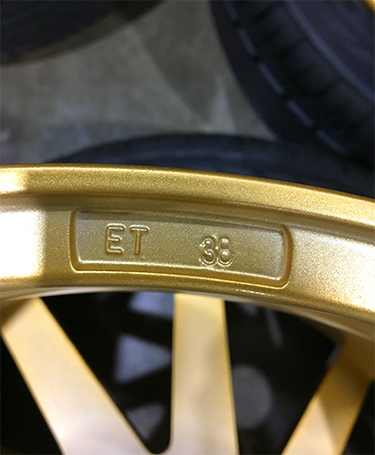
So, when you read a set of wheel numbers, you are reading the details on the size and configuration of the wheel. This information is crucial to determining if a wheel will fit your vehicle.
One Piece Wheels Versus Two Piece Wheels
There are two types of wheels: one piece wheels and two piece or multi-piece wheels.
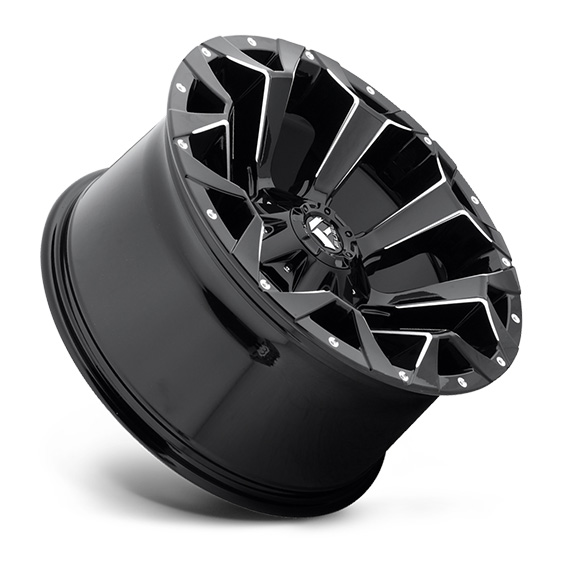
One Piece Wheels
The majority of wheels are one piece wheels. That means that the entire wheel is cast or forged as one piece. One piece wheels are stiffer than two piece wheels.
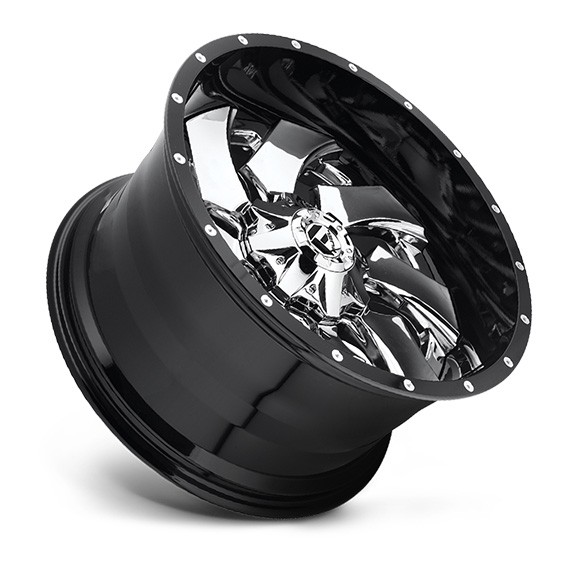
Two Piece Wheels
Two piece wheels are formed as the name implies, in two pieces. The center portion is one piece, the outer portion is the other piece and the two pieces are bolted together. The result is a very strong wheel.
Why should you care about the difference? Because two piece wheels can combine finishes and alloys that aren’t possible with one piece wheels. The manufacturer can also combine different widths and thicknesses of the metal in one wheel. They can also combine widths and offsets for more options in fitment.
If a two piece wheel is damaged, you may not need to replace the entire wheel. You may be able to replace just the damaged portion.
Staggered Wheels
Staggered wheels or a staggered fitment change the stance of a ride. It provides an aggressive look by placing wider wheels on the back of the vehicle than the front. This fitment can only be applied to rear wheel drive vehicles.
Not only do the wider wheels please the eye, they provide better traction, cornering and braking.
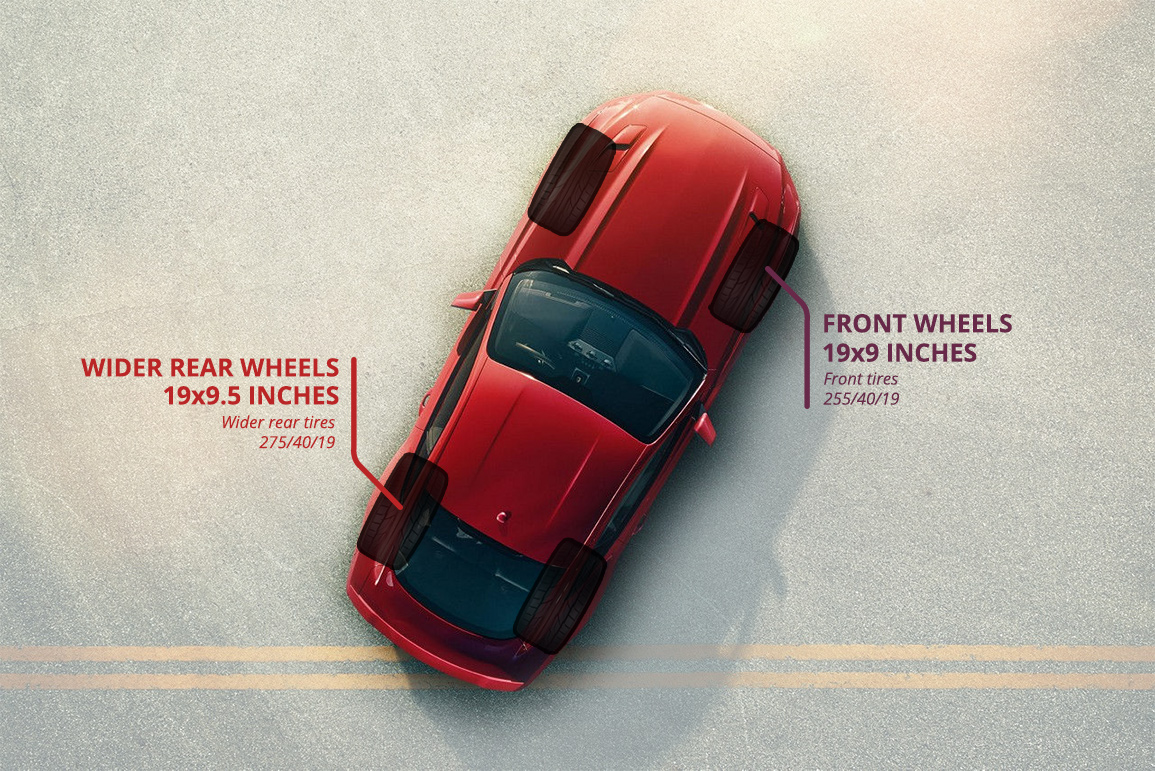
Remember to rotate your tires laterally with a staggered fitment. Also, if you use winter tires, you will need to change back to a symmetrical fitment for cold weather.
FAQ
The wheel hub is the mounting assembly for the wheel. The wheel hub function is to keep the wheel spinning freely and keep it attached to the vehicle.
Wheel offset is the distance between the centerline of the wheel and the mounting surface. The mounting surface can be even with the centerline, protrude forward, or recessed backward from the centerline.
The rim is the outermost part of the wheel. It is made up of the barrel, bead, and flanges.
TPMS stands for tire pressure monitoring system. It is an electronic system in your tire that monitors the pressure in your tires. It activates a warning light on your dashboard to let you know if your tires are over or underinflated.
A staggered fitment means that the wheels on the back of the car are not the same size as the wheels on the front of the car. With staggered wheels, the wheels and tires are wider on the rear axle than the front axle. Staggered fitments are not possible on front wheel drive vehicles.
Wheelfire’s proprietary fitment system guarantees a perfect fit. First the overall wheel and tire diameter are verified to be within 3% of OEM. Then bolt pattern and offset are verified. If you have upgraded the brakes or suspension on your vehicle, let our Customer Service team know before you buy your wheels. If your off road vehicle has been lifted, be sure to note the lift in inches.
As you change the size of the wheel you must change the size of the tire to maintain the overall diameter. You’ll get a slight decrease in fuel economy and acceleration. The trade-off is better handling and greater visual appeal. Off road vehicles will have increased stability on the trail.
You might think that more spokes would make a stronger wheel, but it isn’t true. Wheel strength and integrity is determined more by the metal (or metals used to make the alloy) and the method of manufacturing than by the number of spokes in the wheel design.
This happens when you watch TV or movies because motion pictures are nothing more than a series of individual still photos taken in sequential frames. Most motion cameras film at 24 frames each second. If the frequency of the wheel’s rotation matches the frame rate, the spokes make a revolution every 1/24 seconds and the spoke appears to be in the same spot on each frame. That makes the wheel appear motionless. If the rate of rotation is not the same as the frame rate, the spoke is in a different position and it makes the wheel appear to spin backwards. It’s just an optical illusion.
Wider wheels weigh more, so gas mileage is decreased. You also get a decrease in braking performance and acceleration. On the other hand, handling is increased and you get increased skid pad performance from the tires.
Technically, the rim definition refers to just the outer portion of a wheel. You can’t replace the rim without replacing the entire wheel. Replace wheels when they are damaged or when you want to change the look or performance of your vehicle.
Changing car wheels can increase your car’s performance and give your ride a new look. Change your car wheels to a staggered fitment for a more aggressive stance or upsize to increase performance.
Definitions/Glossary of Terms
- Barrel
- The outermost part of the wheel. This is the area where the tire is mounted.
- Bead
- The inner portion of the flange where the tire edge connects with the wheel.
- Bolt Circle
- The circle created by the bolt holes. The diameter of the circle is the Bolt Center Diameter (BCD).
- Bolt Pattern
- The number of bolts plus the bolt center diameter. It is expressed as N x BCD or a 5 bolts in a 4 �" diameter would be a 5x4.5" bolt pattern.
- Casting
- A wheel manufacturing method where molten metal or metal alloy is poured into a mold to form the wheel.
- Center Bore
- Opening in the center of the wheel that allows the wheel to fit on the vehicle.
- Center Cap
- The wheel part that covers the center bore of the wheel on the outer face of the wheel.
- Deep Dish Wheel
- A wheel where the spokes considerably below the lip.
- Dish
- The portion of the wheel behind the spokes.
- Drop Center
- Ring-like area around the barrel that is closest to the centerline. It is the smallest inside diameter of the barrel of the wheel.
- Flanges
- The flared outer portion of the barrel that keeps the tire on the wheel. There are outer and inner flanges. The outward facing flanges are part of the cosmetic face of the wheel.
- Front Mount Wheel
- A wheel where the drop center is close to the front face of the wheel.
- Hubcentric
- When the center hole of the wheel is the center bore. Hub-centric wheels are mounted and balanced using the standard cone system used by computer balancers to balance off car.
- Hubcentric rings
- These are hard plastic spacers placed between the wheel hub and the center bore. Hubcentric rings allow you to purchase wheels with a larger center bore than OEM.
- Lug-Centric
- With a lug-centric design, the wheels are centered by the torque of the lug nuts and not the center bore of the wheel. These wheels are not balanced with the standard cone system. They must be balanced with their lug bolt pattern.
- Mounting Humps
- Ridges that separate the beads to keep the tire from slipping away from the edge of the wheel.
- Offset
- The distance in millimeters from the centerline of the wheel to the mounting surface. It can be zero, positive or negative.
- Outboard
- The structural part face of the wheel. It is the part that looks outward and gives the wheel it's cosmetic appearance.
- Reverse Mount Wheel
- A wheel where the drop enter is close to the back face of the wheel.
- Rim
- The true rim definition is just the outermost portion of a wheel. However, rim is often used interchangeably with wheel.
- Spokes
- That portion of the wheel that connects the outer ring of the wheel to the wheel plate.
- Staggered
- A custom fitment where the rear wheels are wider than the front wheels.
- Upsize
- To increase the diameter of the stock wheel. When upsizing wheels, you must compensate by decreasing the standing height of the tire to maintain total diameter.
- Wheel
- The entire part on which a tire is mounted. The wheel includes the hub, spokes, and rim.
- Wheel Plate
- The point of contact for the axle seat, the lug bolts and the lateral surface of the rotor.


